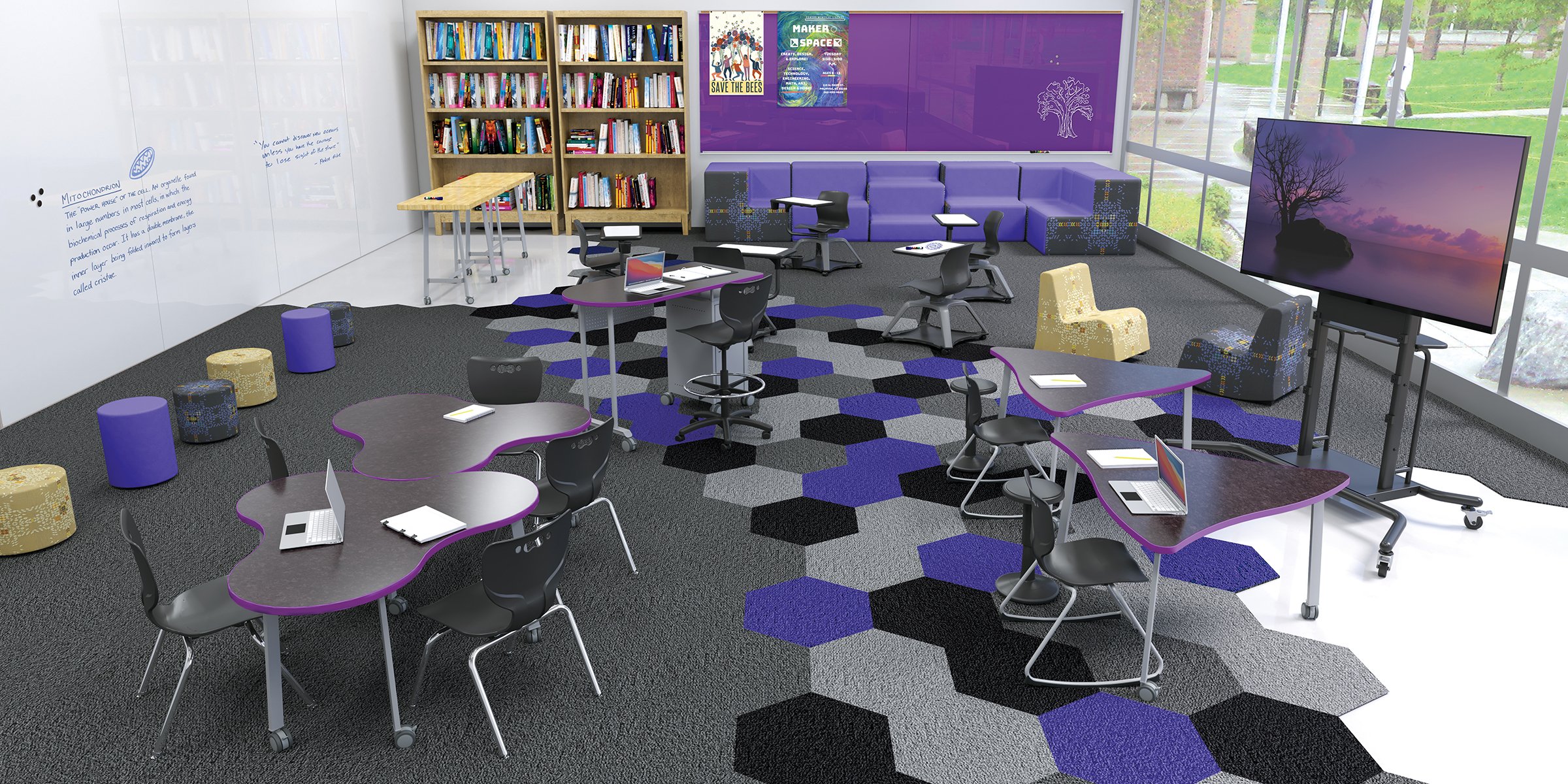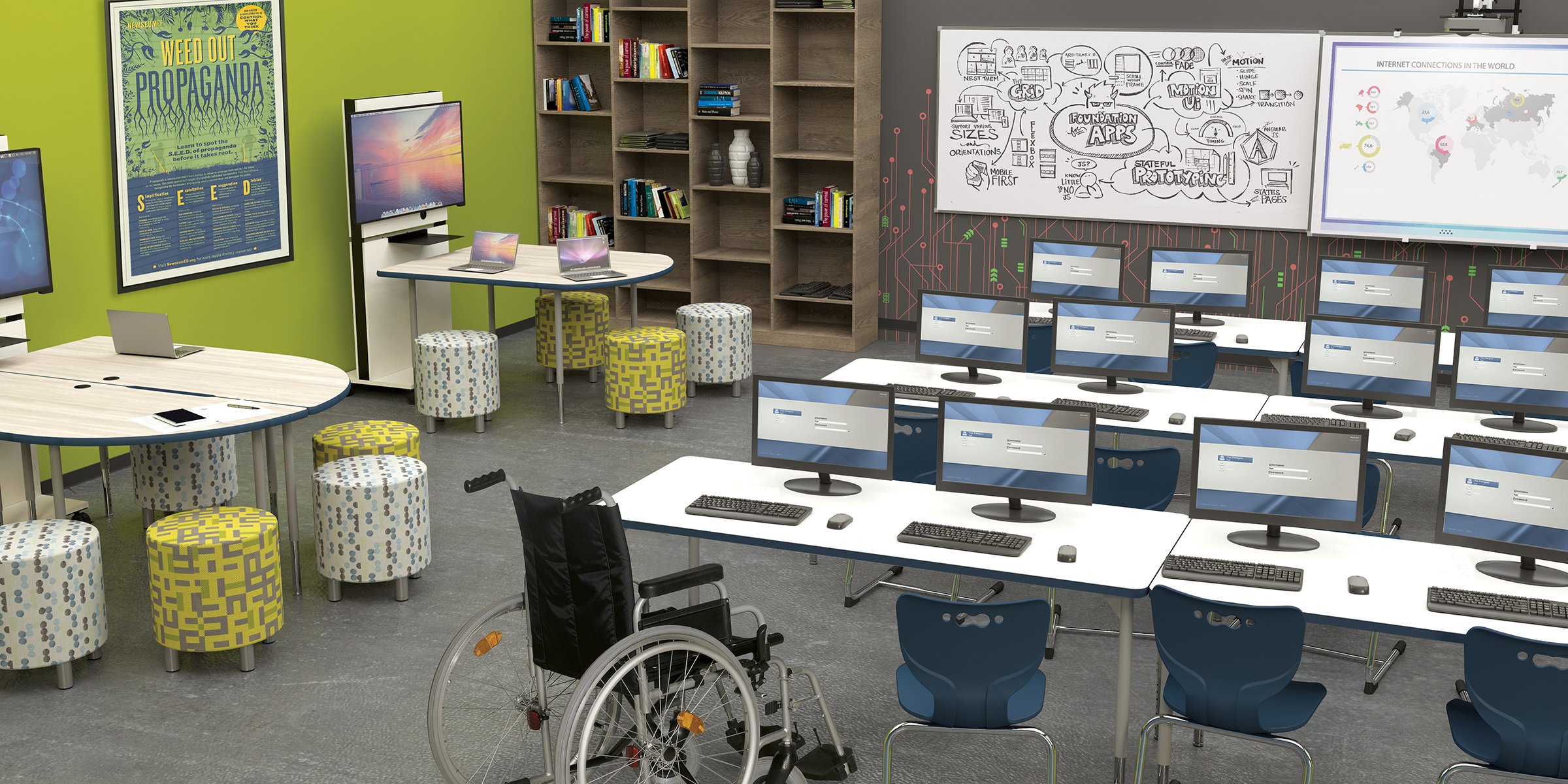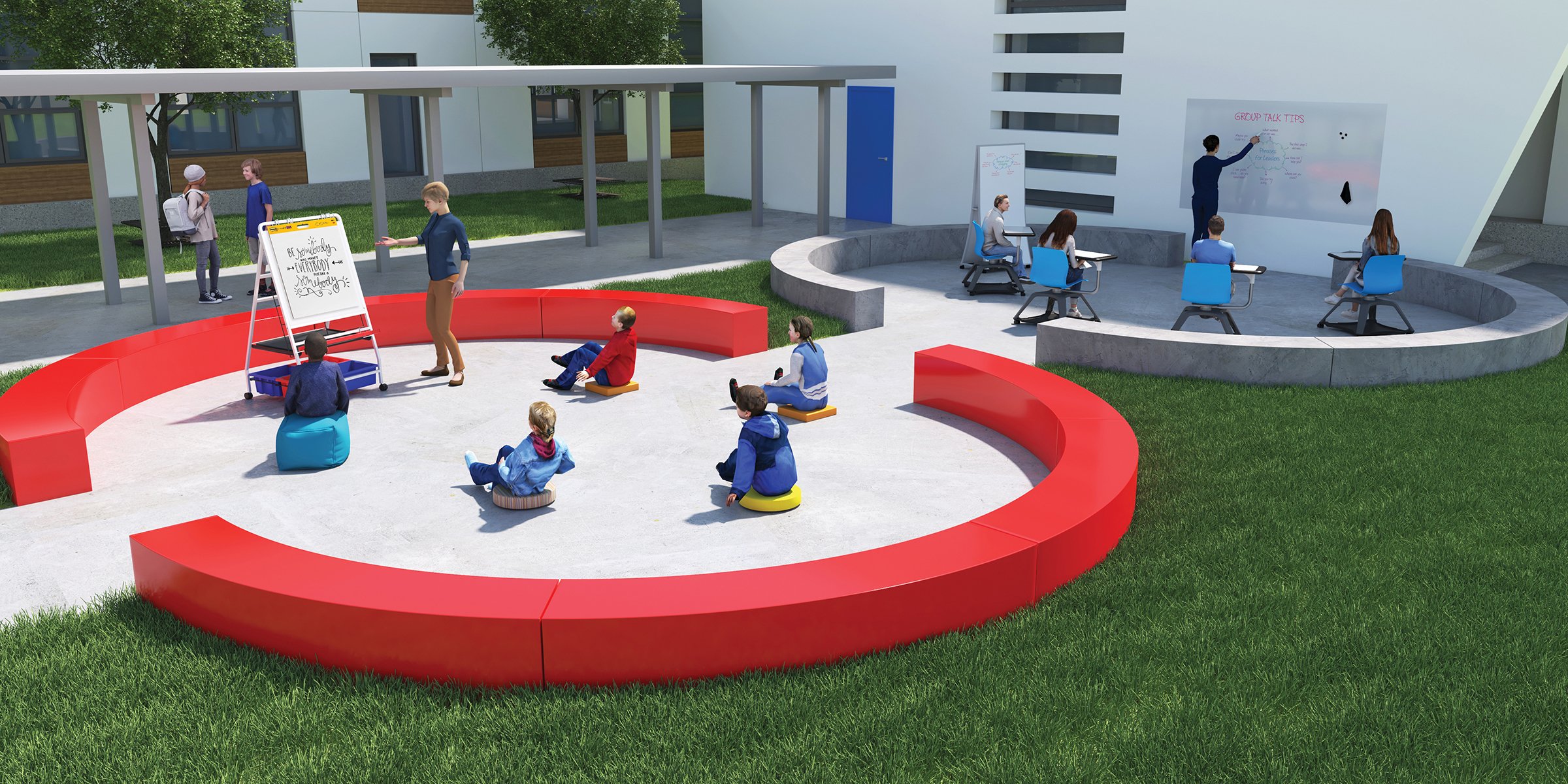Creating Intergenerational Classroom Environments
Posted by MooreCo Inc on Jul 8, 2022 2:02:38 PM
How to Bridge the Generational Gap Between Gen Z, Millennials, Gen X, and Baby Boomers
Classrooms have always been multigenerational, whether it’s an elementary school with a generational gap between the students and their teacher, or a college course that pulls in students across the generational spectrum. The way we learn varies from person to person, not to mention generation to generation, so the way we approach classroom design needs to accommodate these different education styles.
While a classroom can be multigenerational in nature, that doesn’t make it automatically intergenerational. “Multigenerational simply refers to a composition—people from different generations are present. Intergenerational refers to an active exchange or connection between and among the generations, and this is where teachers have a great opportunity to enrich the learning environment” (Ferrell, 2019).
Creating a classroom environment that attracts and attends to all generations requires attention to detail. “Every generation in American history has separate personality traits…The world views of 60-something’s, 40-something’s and 20-something’s are in direct conflict because these generations bring different values, motivations and life experiences” to the classroom (Alverson, 2020). Building these worldviews into the classroom creates respect and curiosity between generations, so they may learn something from each other, whether that’s peer to peer, student to teacher, or teacher to student.

Introducing: Generation Z, the digital natives who don’t know a world without technology. That varies considerably from even the next elder generation, Millennials, who are tech savvy but were born on the cusp of the tech boom, so their childhoods were relatively tech-free. Generation X and Baby Boomers learned modern technology much later in life, giving them a wide berth from Gen Z. When we create classrooms that center technology, even when there is a mix of generations present, we are dismissing the experiences of those who are not comfortable using devices, computers, apps and social media, who may not have had the privilege of growing up with technology. Similarly, if we create classrooms that are absent of technology, we are losing out on the opportunity to meet Generation Z where they are.
Having multiple options is more important than ever. For instance, provide assignments in various formats to “accommodate Gen Zers who prefer digital format as well as those who work best with traditional paper and pen” (Berguerand, 2022). Video is a main channel that Gen Z uses to express themselves (think TikTok), so allowing Gen Z students to submit video assignments where other generations might prefer a written essay or a diorama could be a great way to accommodate the generational gap. While teaching an intergenerational class, one teacher decided to incorporate "print materials, formal lectures, online discussions, visual student lead presentations, creative group collaboration assignments, student lead online presentations and social media engagement” in a hybrid-remote learning environment (University of the Frasier Valley, 2012) to accommodate all generations.
Incorporating intergenerational design in the classroom means allowing multiple seating arrangements, keeping technology accessible but not centered, and allowing class to take place anywhere!

Allow multiple seating arrangements
A generationally diverse classroom deserves diverse seating options. Incorporate Blossom Soft Seating for kids who like the flexibility to move around the classroom and traditional desks like our CogNitiv Activity Tables with height adjustment for those who want a balance. Pair these with Hierarchy 4-leg chairs or stools, with or without arms, and in a variety of colors, to make every student feel like they have a designated place in the classroom. Our Activity Tables can be adjusted to suit floor sitters or those who prefer traditional chairs, and can encourage group collaboration.

Keep technology accessible, not central
Gen Z needs technology to learn. Boomers may prefer handwritten notes. Keeping technology available to those who want to use it, but not requiring it in order to get assignments completed, is a great way to balance the generational spectrum in your classroom. Keep your classroom equipped with Hierarchy Creator Desks with a writeable porcelain steel top to give students a new way to take notes. Add MoorePower™ Towers throughout the classroom, so students can plug in their devices and consider the MediaSpace Flat Panel Cart, to accommodate students who are visual learners. Meanwhile, modern learning tools like the Liso Glass Wall covers an entire classroom wall and the Visionary Curve Colors Magnetic Glass Board provides a colorful alternative to the traditional whiteboard, giving you just one more reason to choose glass for your class.

Allow class to take place anywhere
Remote learning is more prevalent than ever in a post-pandemic world. We’ve learned that some students react more positively to remote education than in-person learning, while others prefer that classic peer-to-peer interaction. Consider taking the classroom outside with the moveable iTeach 2 Electric Interactive Whiteboard Cart and having students comfortably seated on Outdoor Beanies and Dots. To keep things simple, try the Essentials Mobile Whiteboard or the mobile Storage Wheel, so your class is ready to go wherever the day takes you. Setting up a hybrid classroom, where some of your class is at home on a screen and others are taking in-person notes from a whiteboard, is vital to creating an intergenerational classroom that invites everyone to learn in a way that’s familiar to them.
Topics: Learn from Home, hybrid classroom, remote, Diversity, Equity, and Inclusion, intergenerational classroom
